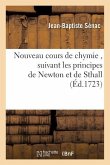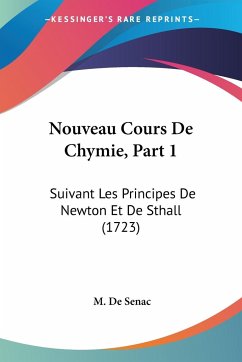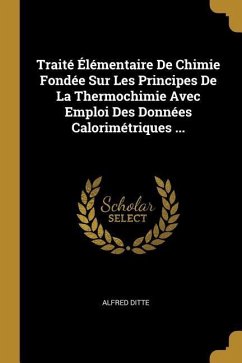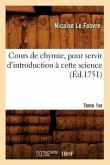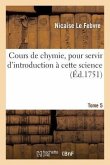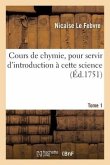Nouveau Cours De Chymie, Suivant Les Principes De Newton [et] De Stahll; Avec Une Discours Historique, published in 1723, offers a fascinating glimpse into the world of early 18th-century chemistry. Authored by Jean Baptiste Senac, this work presents a new course in chemistry grounded in the principles of both Isaac Newton and Georg Ernst Stahl. The book also contains a historical discourse, contextualizing the chemical knowledge of the time. This historical text is an invaluable resource for scholars and enthusiasts interested in the history of science, particularly the evolution of chemical theories and practices. The blending of Newtonian physics with Stahlian chemistry provides a unique perspective on the scientific landscape of the period. It is a valuable addition to any collection focusing on the history of science and medicine. This work has been selected by scholars as being culturally important, and is part of the knowledge base of civilization as we know it. This work was reproduced from the original artifact, and remains as true to the original work as possible. Therefore, you will see the original copyright references, library stamps (as most of these works have been housed in our most important libraries around the world), and other notations in the work. This work is in the public domain in the United States of America, and possibly other nations. Within the United States, you may freely copy and distribute this work, as no entity (individual or corporate) has a copyright on the body of the work. As a reproduction of a historical artifact, this work may contain missing or blurred pages, poor pictures, errant marks, etc. Scholars believe, and we concur, that this work is important enough to be preserved, reproduced, and made generally available to the public. We appreciate your support of the preservation process, and thank you for being an important part of keeping this knowledge alive and relevant.
Bitte wählen Sie Ihr Anliegen aus.
Rechnungen
Retourenschein anfordern
Bestellstatus
Storno

![Nouveau Cours De Chymie, Suivant Les Principes De Newton [et] De Stahll; Avec Une Discours Historique .. Nouveau Cours De Chymie, Suivant Les Principes De Newton [et] De Stahll; Avec Une Discours Historique ..](https://bilder.buecher.de/produkte/74/74951/74951292n.jpg)
